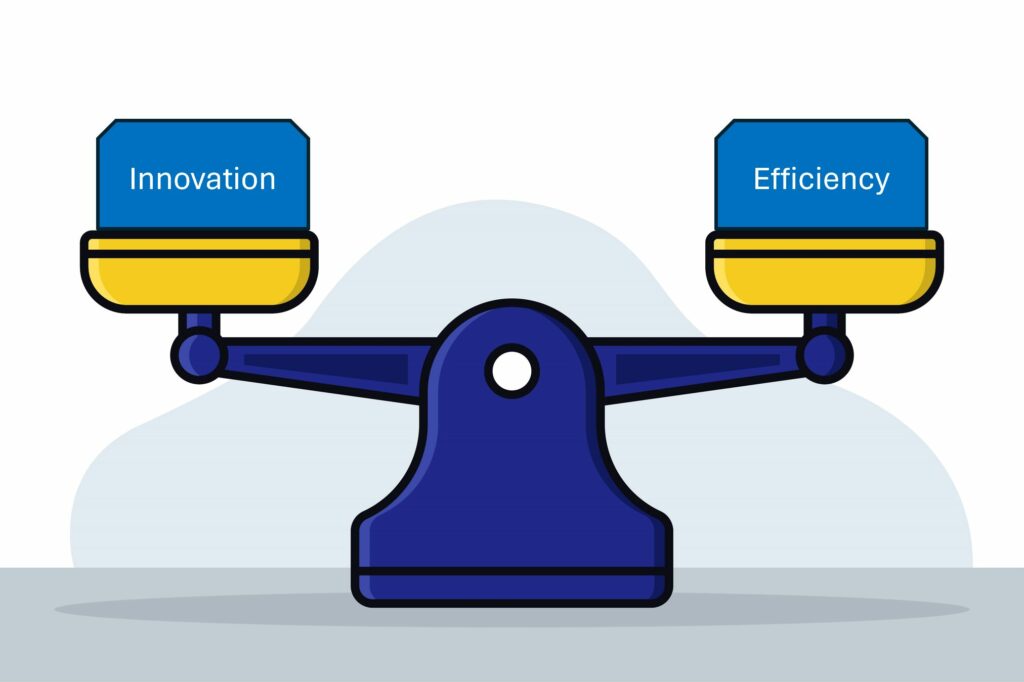Implementing Strategy: Balancing Innovation and Efficiency

Leading successful change can be paradoxical. There is a drive to disrupt the status quo while embedding new ways of working. Familiar processes get upturned and new processes need to be learned. We replace systems with new ones and map and transform data to fit. People have to give up their habits and behaviours and commit to new ones.
Conflict between agility and innovation
We seek agile organisations which can rapidly adapt to changing circumstances. At the same time, customers expect consistency in the products and services they buy. Quality matters and, for most people, quality does not mean new features every time they purchase. It means that when they buy they get what they expected. For that to happen, we must balance agility and innovation with some efficient, reliable production of goods and services.
Strategy Implementation – no magic bullet
With management and consulting experience, I know that there is no silver bullet for anything. There is no magic method of transforming your business. There are lots of good methodologies, good systems and best practices. But every one of them needs to be assessed, and perhaps rejected. If accepted, tailor and scale them for your organisation and your customers. You then need to implement.
Implementing strategy is where the spaceship of innovation has to come back down to land.
In that landing, the rubber needs to hit the road and keep on running. That requires a meeting of minds between the innovators and disruptors and the people who manage operations, balance the books and keep customers happy.
Creating change and consistent value do go together
I work in strategy implementation – assessing initiatives, defining options, preparing feasibility studies and business cases and running projects and programmes of work. I also keep a foot in the operations camp. I use statistics, lean six sigma, value stream mapping, business process design etc. to ensure that benefits are realised and value is consistently created. Sometimes it is challenging to explain how those two approaches reconcile.
Ambidextrous Leadership
Last night I attended the monthly meeting of the Strategy Implementation Institute (SII). It is always a great chance to get updates on the latest thinking and to glean perspectives from my colleagues around the world. This month SII Co-Founder Robin Speculand invited Gaia Grant and Andrew Grant to speak on Ambidextrous Leadership. It was a fascinating session which reflects some of the issues outlined above but in a much broader context of research and practice.
In their words: Ambidextrous leaders pursue rapid breakthrough innovations to ensure relevance and competitiveness into the future. They also ensure incremental developments required to gradually build systems and structures. This ambidextrous approach ensures innovation and growth is sustainable. For more information see their website: https://tirian.com/ambidextrous-leadership/
What can we do?
The key lesson for me from the session is to keep looking for insights for how you can create value. If you have an instinct about how to make things happen, there will be someone with more experience who can help you turn that instinct into great results. Find them and take their advice.
Phil Guerin, Consultant/Director, Hague Consulting Ltd. © Hague Consulting Ltd 2024
Share this on social media
